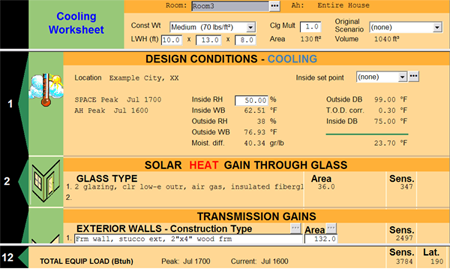
Today we are going to talk about conditioned attics and heat load calculations.
Did you know that some people still don’t know how conditioned attics affect heat load calculations? See if you can follow this:
When you move your mechanical system, the air handler and ductwork, inside the building envelope by moving the insulation, from real world experience, we know that the building load is less and the tonnage required should be lowered, but the standard Manual J calculation tells you to increase the tonnage because you have increased the surface area of the building and you have more volume. How can the real world be different from the calculation?
Well, Manual J calculations base infiltration on volume, so when the volume increases, by adding the volume of the attic to the calculation, it appears that the building infiltration and energy load also increase. However, the missing piece, is that in the real world, a house with a sealed, conditioned attic will have fewer air changes than a house with a vented attic and leaky ducts, even though there is more surface area and more volume. This occurs because even though the surface area and volume are greater the effect on air change and pressure distribution is so significant you actually save energy.
You see, it’s not the volume that matters. The calculations should be based on actual leakage.
You should use a blower door test to verify the CFM50 leakage rate is acceptable for your climate zone and then your mechanical contractor should do the following in the Manual J software:
- Make sure the ductwork is in conditioned space, meaning zero duct leakage to the outside
- Set your building infiltration rate to zero
- And, add ventilation in accordance with ASHRAE 62.2
This works and shows you that conditioned attics are much more energy efficient than vented attics with leaky mechanical systems up there.



